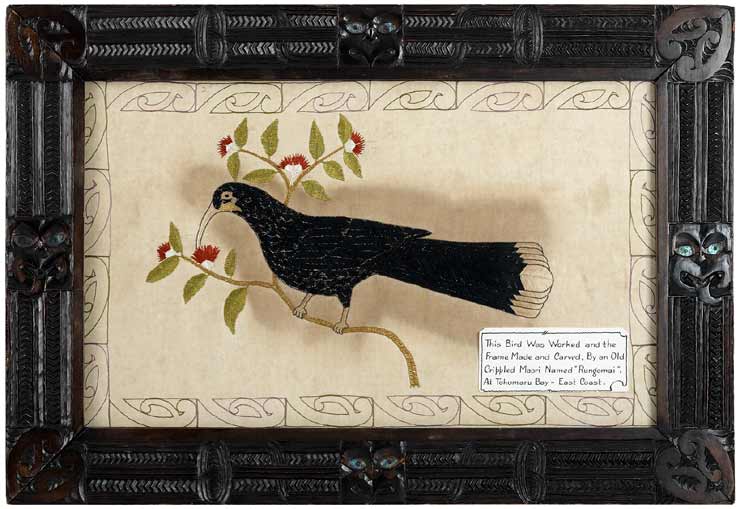 Embroidered picture of a huia, c1900
Embroidered picture of a huia, c1900
TLF ID R5937
This is an embroidered picture of a female huia bird ('Heteralocha acutirostris') on a branch taking nectar from the flowers of a rata (a native New Zealand tree). The dark-coloured bird has white-tipped tail feathers, and light orange wattles at the base of its beak. The work has a stylised Mäori design around the edges of the embroidery and a frame also carved with Mäori designs. It is made from coloured silks on linen and the frame is kauri (another native New Zealand tree). A small piece of paper attached to the lower right corner of the linen reads, 'This Bird Was Worked and the Frame Made and Carved, By an Old Crippled Mäori Named "Rungomai", At Tokomaru Bay - East Coast'. It was made around 1900 and measures 48 cm x 70 cm.
